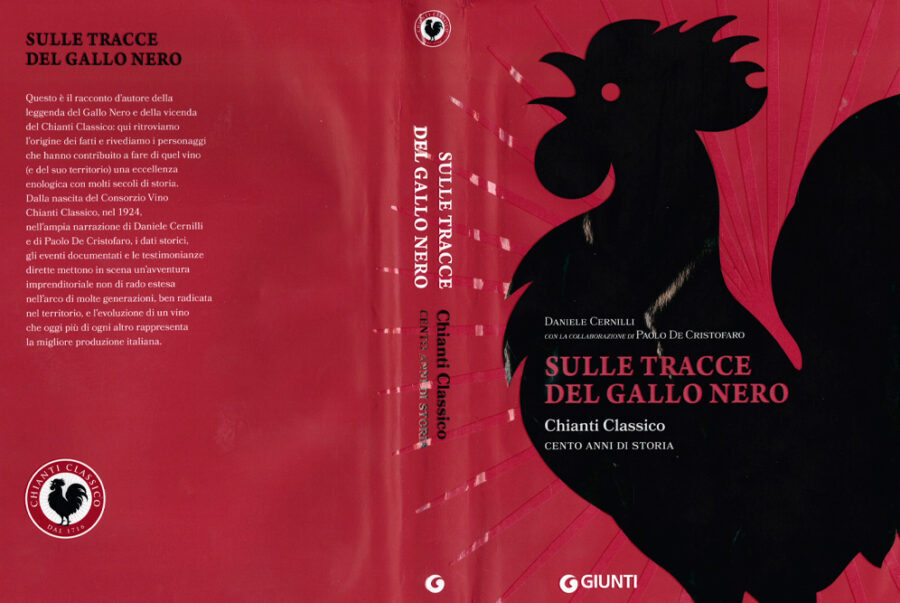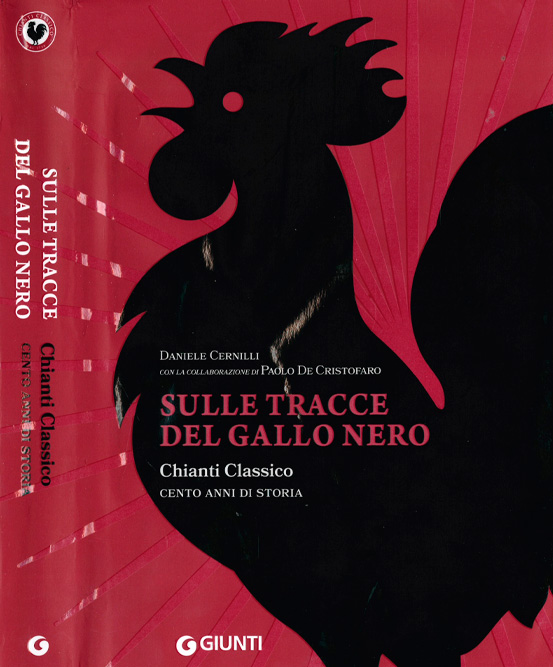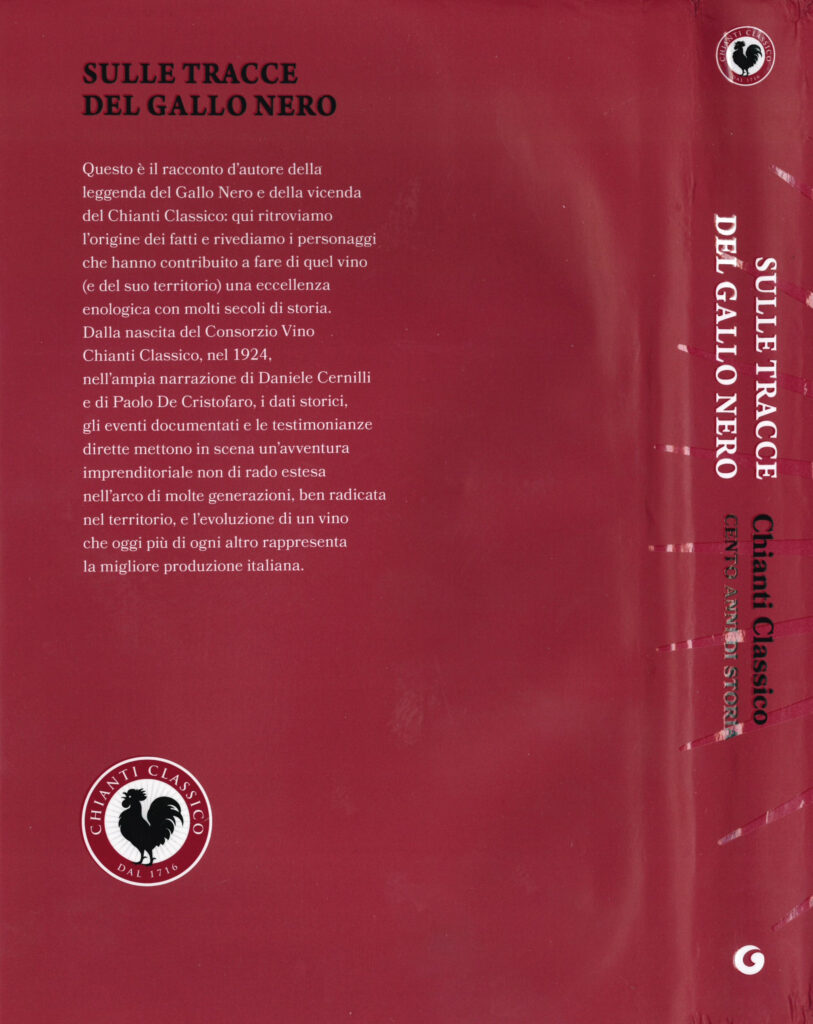
Sulle tracce del Gallo Nero (In the Footsteps of the Black Rooster)
22 November, 2024

As part of the centennial celebrations of the Chianti Classico Consortium this year, the publication Sulle tracce del Gallo Nero (In the Footsteps of the Black Rooster) stands out. The book traces the first century of Italy’s oldest and most prestigious wine consortium. Written by Daniele Cernilli, one of Italy’s most respected wine critics and an Honorary Ambassador of Chianti Classico, in collaboration with journalist Paolo De Cristofaro, it transforms technical and bureaucratic records—such as meeting minutes and ministerial documents—into a compelling narrative that is accessible even to those unfamiliar with the subject. This accomplishment is further enriched by the author’s deep historical and humanistic perspective.
The book unfolds chronologically, weaving the history of the Consortium through two key thematic threads. On one side, the battles: from the legendary clash between the Guelphs and Ghibellines at Montaperti in 1260, which gave rise to the Black Rooster legend, to more recent conflicts such as the dispute between Chianti and Chianti ‘Classico,’ as well as the trademark battle with the U.S.-based Gallo Winery. On the other side, the milestones: from the Consortium’s founding in 1924 by 33 visionary producers to its recognition as a DOCG in 1984, and the groundbreaking Chianti Classico 2000 scientific project, which revolutionized the understanding of Sangiovese as the region’s defining grape variety.
Consistently throughout the narrative, the Black Rooster symbol stands as a central, unifying, and even auspicious figure. From its prominent place in Vasari’s Renaissance portrayal of the Battle of Montaperti in the Salone dei Cinquecento (Hall of the Five Hundred) in Florence, to its ascent as one of the world’s most iconic wine brands through memorable advertising campaigns, the Black Rooster embodies the proud, innovative, and resilient spirit of the region.
And the Ricasolis? The Ricasoli family’s prominent role in the history of Chianti since the early Middle Ages is given ample space in the book. “I would like to thank Daniele Cernilli and Paolo De Cristofaro for so masterfully highlighting my family’s contribution to Chianti Classico in a book that combines historical richness with an enjoyable read,” says Francesco Ricasoli.
While the famous “Chianti formula” created by the Barone di Ferro (Iron Baron) Bettino Ricasoli in 1872 is widely recognized, less well-known is the fascinating story of Luigi Ricasoli Firidolfi’s presidency (1947–1958), a key figure in Chianti’s post-World War II revival. One of the most memorable moments was the 1957 debate between Luigi and Professor Giovanni Dalmasso, described by Cernilli as “epic and worthy of a theatrical play.” A confrontation between two opposing visions of wine production in Chianti: mass-market wines according to Dalmasso, and prestigious wines in the vision of Baron Ricasoli. This was a crucial moment leading to the recognition of the DOC and the acknowledgment of the value of Chianti Classico, which was fully realized under the subsequent presidency of Luigi’s son, Bettino Ricasoli (1958–1974).
Without a doubt, another milestone in the history of the Consortium. Not by chance, it was precisely during this period that the traditional Chianti flask, symbolizing sharecropping and the production of more “table wines,” was replaced by the 0.75-liter glass bottles.
In more recent years, Francesco Ricasoli has been instrumental in shaping key decisions for the Consortium, including the establishment of the Gran Selezione category in 2014, which represents the highest tier of the quality pyramid, and the introduction of Additional Geographical Units (Unità Geografiche Aggiuntive, UGAs) in 2023, enabling a more precise identification of the wines’ origins.
In the Footsteps of the Black Rooster, with a foreword by Chianti Classico Consortium President Giovanni Manetti and Tuscany Regional President Eugenio Giani, is enriched by the heartfelt testimonies of Chianti Classico’s Honorary Ambassadors in Italy and around the world.
Published by Giunti, the book is available in Italian at all Giunti bookstores in Italy or online at the Giunti Editore website.







